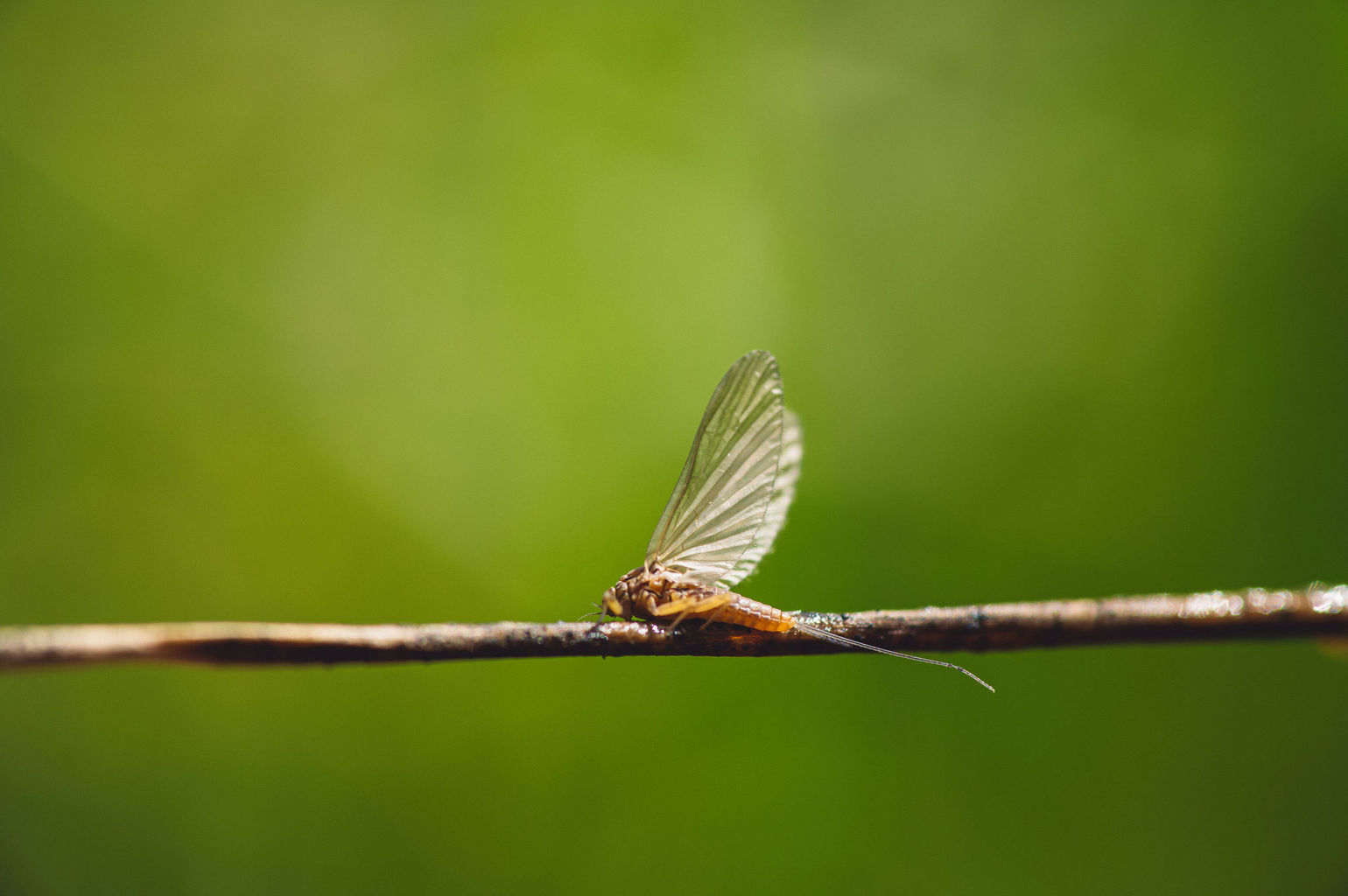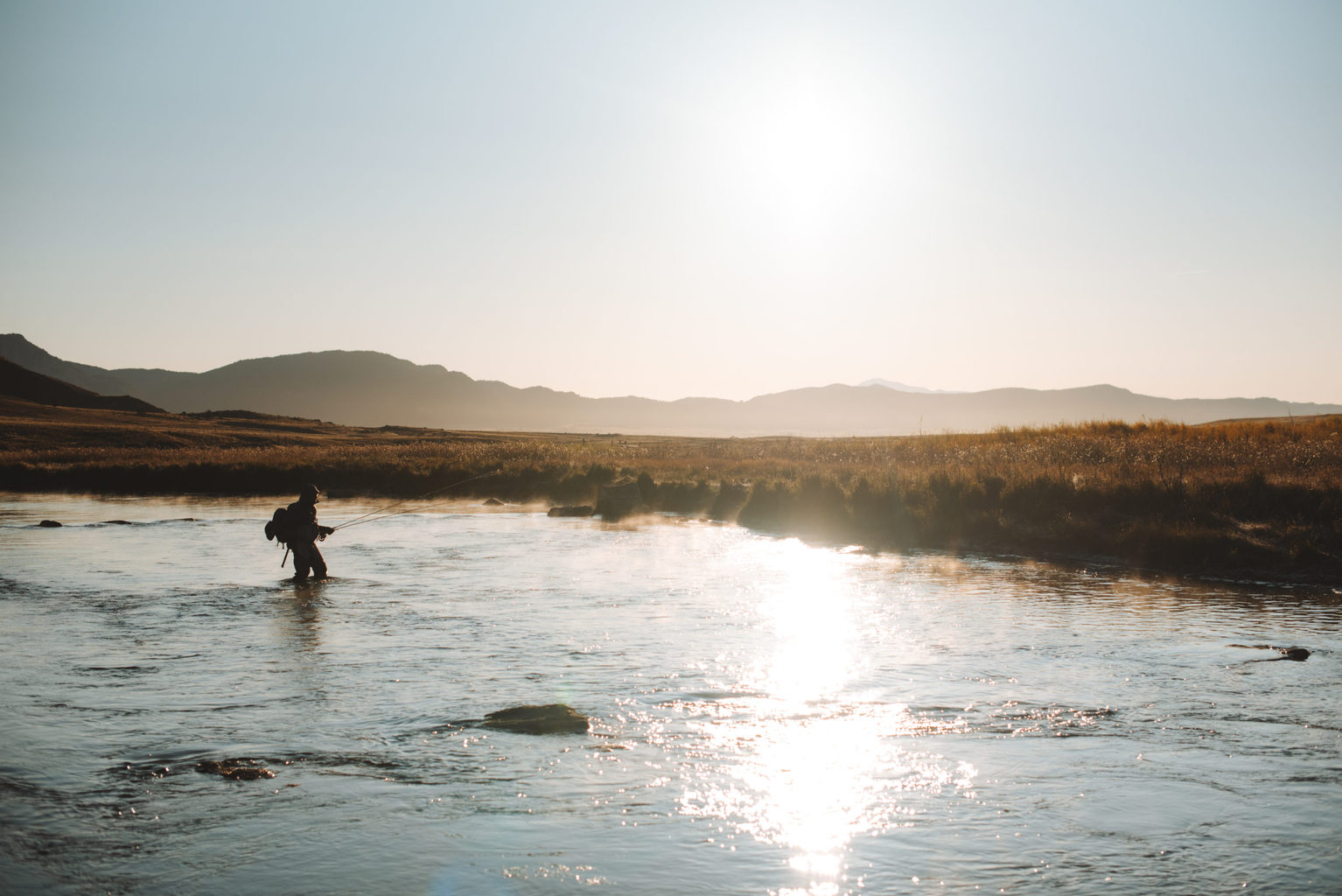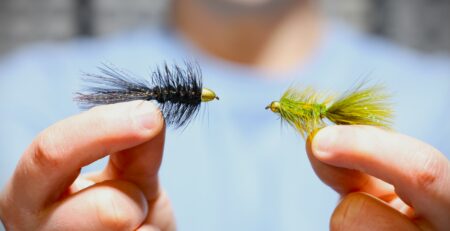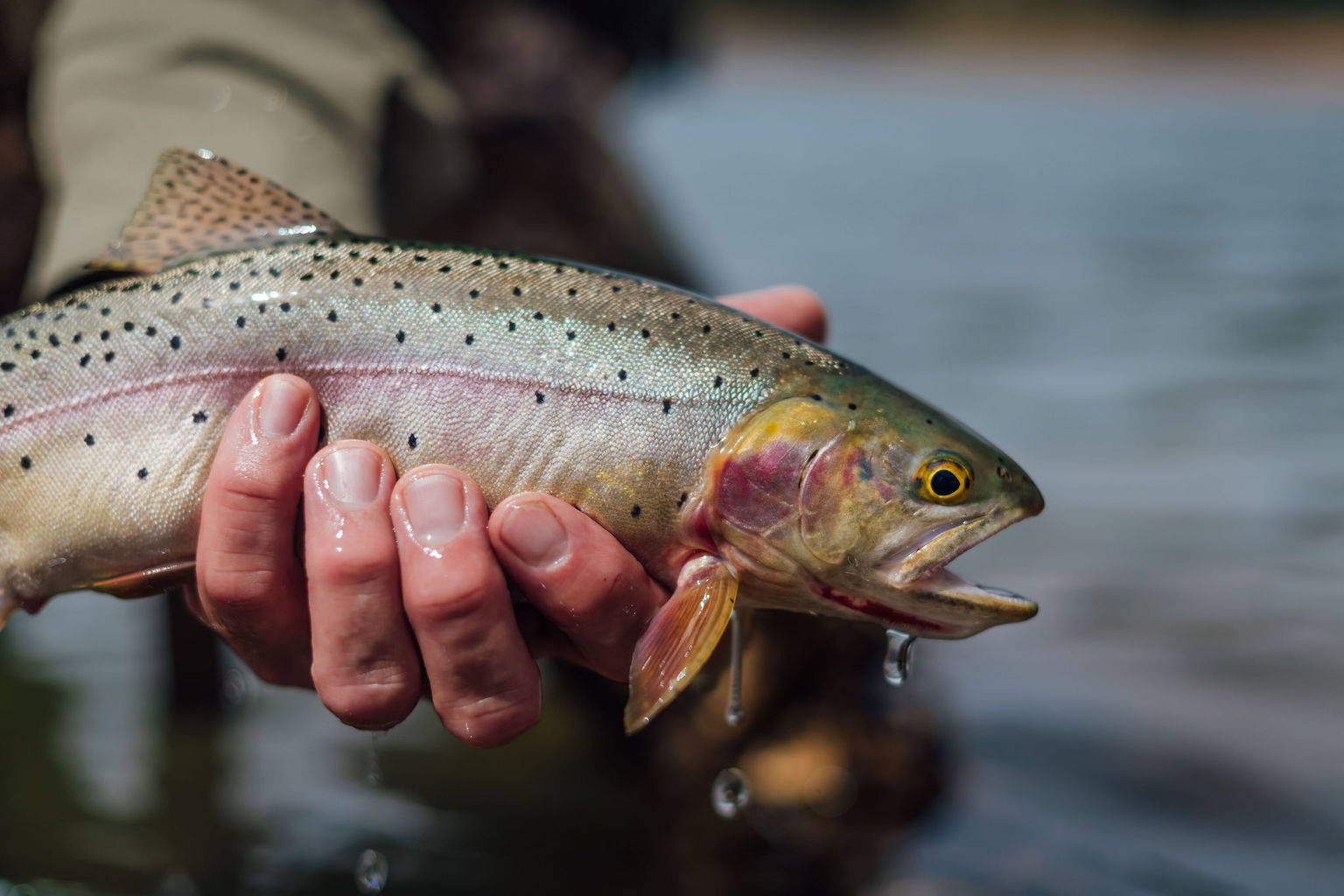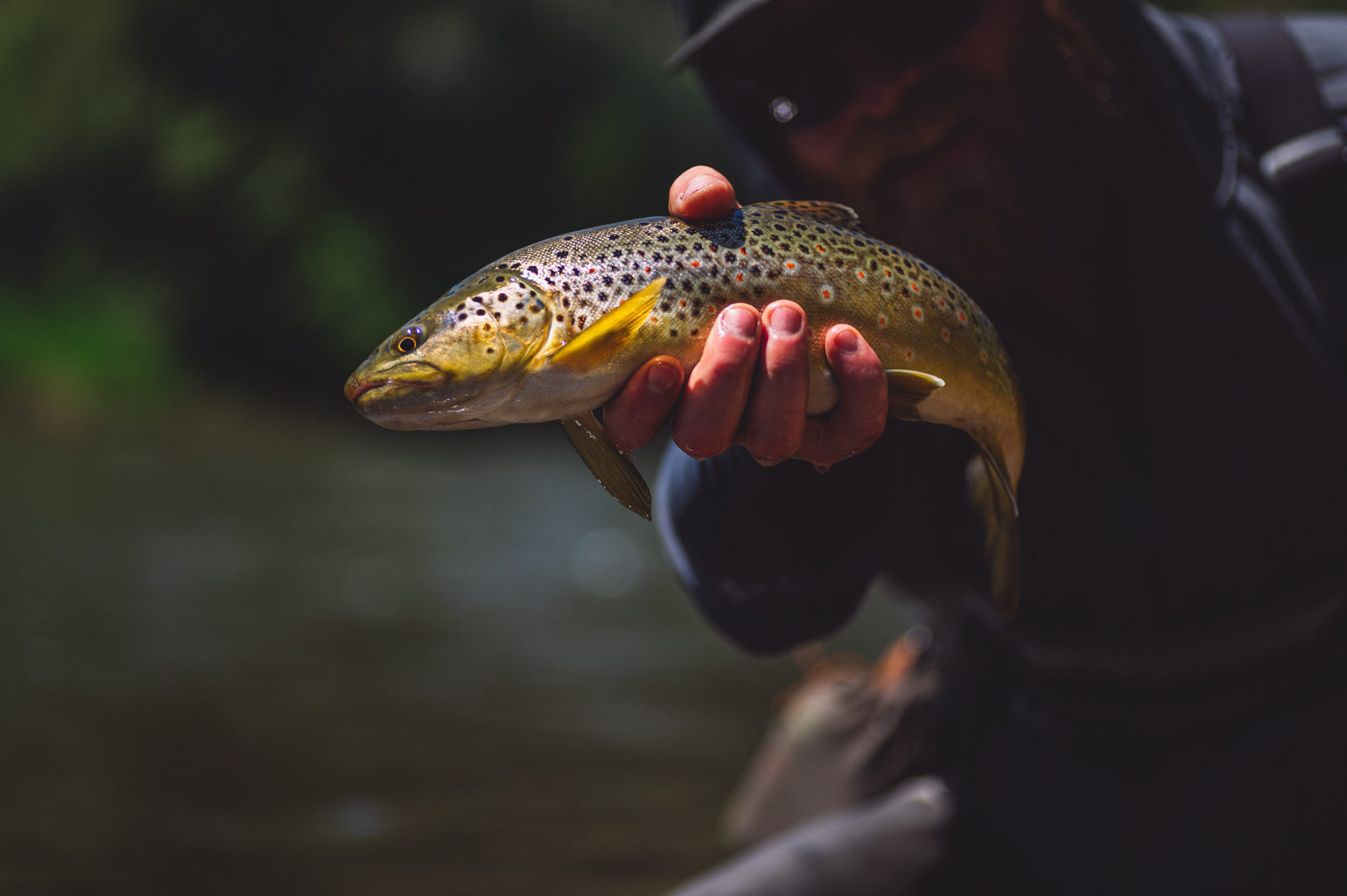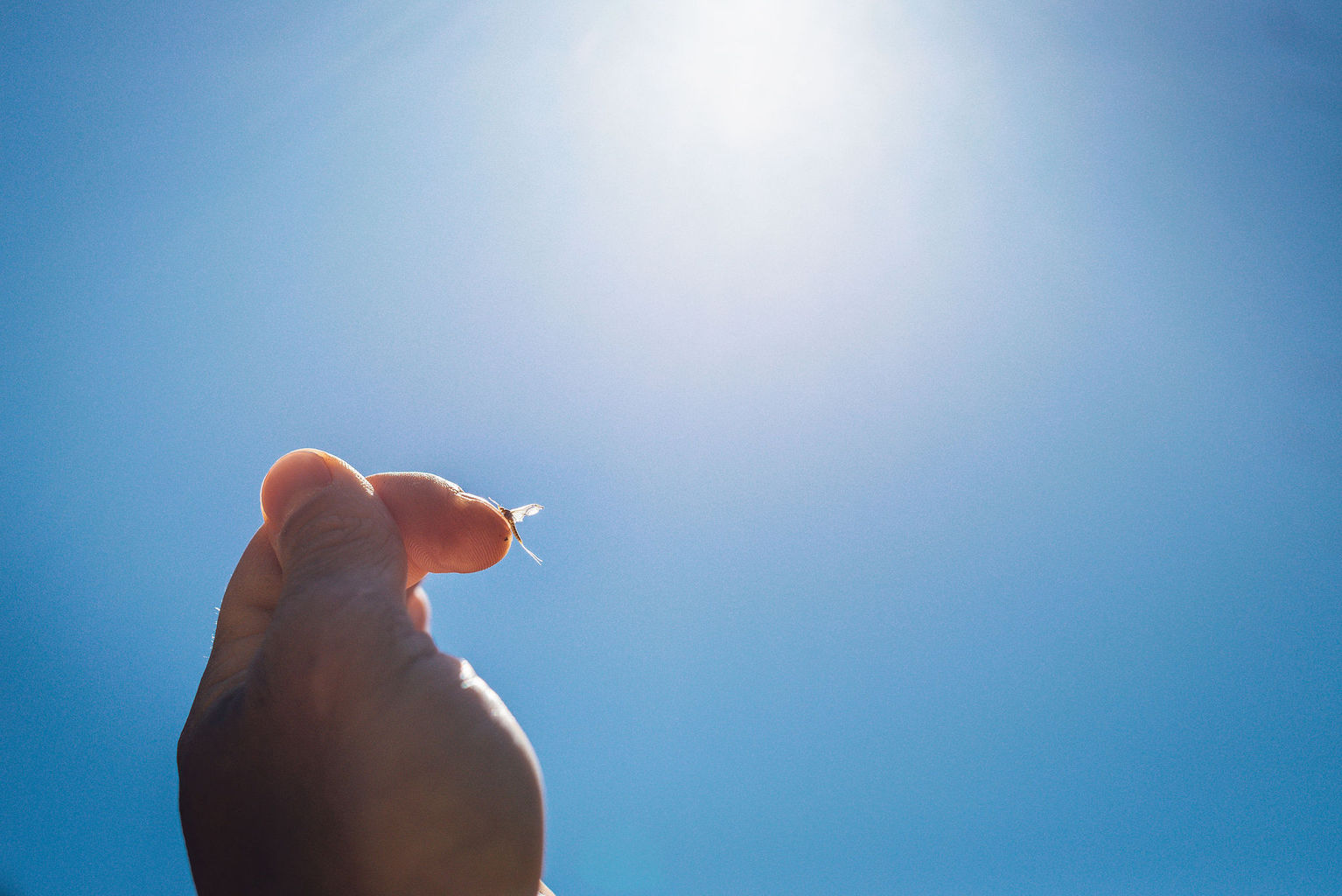Blue-Winged Olive Mayflies: Everything You Need To Know
The mayfly is the quintessential aquatic insect that is often thought of when people visualize insects and fly fishing. Blue Wing Olive Mayflies are an important hatch that occurs year round, predominantly in spring, summer, and fall. They are an important food source in a trout’s diet, and fly fishermen should understand the hatch so they can take advantage of the opportunity.
Here is everything you need to know about Blue-Winged Olive mayflies and how to fly fish them.
Table Of Contents
- What Is A Blue-Winged Olive Mayfly?
- What Is A Baetis Fly?
- What Does A Blue Wing Olive Imitate?
- What Time Do Blue Wing Olives Hatch?
- What Size Hook For A Blue Winged Olive?
- What Type Of Fly Is A Blue-Winged Olive?
- Is Blue Winged Olive A Dry Fly?
- What Tippet And Leader Do You Use For Dry Flies?
- What Is The Best Dry Fly For Trout Fishing?
- How To Fish B.W.O Emerger Flies?
- How To Fly Fish Spinner Dry Flies?
- What Are the Best 6 Blue-Winged Olive Flies?
What Is A Blue-Winged Olive Mayfly?
Blue winged olives, blue-winged olives, or B.W.O’s are mayflies. Blue-winged olives are mayfly within the genus Baetis and part of the Batidae family. This species of mayfly are extremely widespread across North America, and there is a good chance that if you fly fish they are hatching near you.
Blue-winged olives are often a favorite hatch for fly fishermen. This is usually one of the first mayfly hatches in the spring. In addition, they hatch in large numbers, and the duns ride on the surface of the water for long periods of time. The B.W.O. dun is a developing adult mayfly. Duns ride for long periods of time on the water’s surface to develop their upright wings. This time period makes them ideal targets for trout looking for an easy meal. It also gives the fly fisherman an excellent chance to dry fly fish.
What Is A Baetis Fly?
This is where it can get confusing, but don’t let it. We’ll keep it fairly simple. In the genus baetis, there are tons of species that look very similar in size, shape, and color. In most cases, you need a laboratory to identify the differences. It doesn’t make a difference when we are on the water presenting dry flies, emerger flies, or nymphs. B.W.O. and Baetis are generally referring to the same thing.
When most anglers see mayflies in smaller sizes, especially mayflies with olive bodies and bluish wings, they refer to them as B.W.O.’s, blue wings, blue winged olives, or baetis. These are found in size 18-22.
Blue Wing Olive nymphs are found in the gravelly substrate of freestone streams, creeks, and tailwater rivers. They can be found in slow back eddies, slow currents, and hatching off of gravel bars. Blue-winged olive hatches can be prolific. Often times they will start pouring off gravel bars in larger numbers and this is your chance to capitalize on the hatch.
What Does A Blue Wing Olive Imitate?
The blue winged olive hatch goes through four stages that are important to a fly fisher:

Blue Winged Olive Nymph
A blue wing olive nymph has a slender body that can range in color from light olive brown bodies to a dark olive color. Blue winged olives flick their tail to help them swim under water, but will also drift motionless for long periods of time when hatching.

Blue Wing Olive Emerger
This portion of an emerging insects life cycle occurs when nymphs starts to shed their nymphal shuck and makes their way to the surface of the river. Blue winged olive mayflies will trap bubbles between their skin and nymphal shuck to help them swim vertically to the water’ surface. At this point, they must break through the meniscus of the water. The meniscus is the tension created at the surface of the water. It forms a barrier to the emerging insect. Trout key in on these struggling insects. Patterns with flash back make a fine choice when choosing flies.

Duns
This is the moment in a mayflies lifecycle in which they are between the emerger and fully formed adult stages of the mayfly life cycle. Blue winged olives must ride on the surface of the water to dry their wings. Duns are immobile during this phase of a baetis hatch, and the trout know this too.

Spinner
Once the dun’s wings dry, they fly to stream side bushes and expend their energy mating. This happens in a relatively short time span of half a day. Clouds of adult blue wing olives can be seen hovering in swarms. The females will return to the river to deposit her eggs, and starting the lifecycle over. She expends all her energy and dies. Landing on the water fully exhausted with wings splayed out flat.

What Time Do Blue Wing Olives Hatch?
A Blue wing olive hatch can happen year round. However, they mostly happen in the spring and then again in the fall starting in mid September. These hatches are largely dependent on water temperature. Cloudy, rainy, stormy, and snowy weather makes for the best hatches. During these times the hatches are the longest and most intense.
Many times, you will also see a blue wing olive hatch during the summer. This typically happens when there is a drastic change in the weather and temperature. It is not uncommon for rain storms to both drop the air and water temperature enough to trigger a blue wing olive hatch. Always carry b.w.o. patterns in your fly box and be ready to match a spontaneous b.w.o. hatch.

What Size Hook For A Blue Winged Olive?
A b.w.o.’s body is slender and small. Choose blue wing olive fly patterns in hook sizes 18-22. Because these flies are smaller, choose a hook with a good hook gap to ensure a solid hook set. Tactical jig head hooks are a good option, and they allow you to add extra weight to get your flies into the strike zone.
What Type Of Fly Is A Blue-Winged Olive?
There are many great fly patterns that you could carry in your fly box when covering a blue wing olive hatch. Trout key in on almost all the stages of the blue wing olive hatch. Choose a variety of flies for covering the different life cycles that we discussed above: nymph patterns for when they crawl out from under the gravelly substrate, emerger patterns tied in both nymph and parachute form to imitate bwo’s movement to the water’s surface, dry fly patterns for dry fly fishing while the duns dry their wings, and spinners to capitalize on the spinner fall post mating and egg laying.
Is Blue Winged Olive A Dry Fly?
A blue winged olive is a broad umbrella name given to the genus batidae. It is often used to describe mayflies with a olive thorax and abdomen, bluish wings, and sized #18-22. The Dun stage of a blue winged olive hatch spend long periods of time on the surface of the water drying their wings prior to flight. This makes dry fly fishing a b.w.o. hatch a favorite of fly fishers. Therefore, choosing the right dry fly pattern is an important part of capitalizing on this prolific spring and fall hatch.

What Tippet And Leader Do You Use For Dry Flies?
Choosing the correct tippet and leader for a b.w.o. hatch depends on what you have confidence in and where you fish. Generally speaking, because these flies are smaller sizes, you are going to want to fish your flies on 4x, 5x, or even 6x tippet. I would choose a 9ft 4x leader and then add 18″ to 24″ of flurocarbon tippet in 4x, 5x, and/or 6x. The lighter tippet size allows for better presentation and the flurocarbon sinks. This is important when fishing to selective trout because the tippet won’t create dimples in the water’s surface which will tip off a weary trout.
Recommended Reading: What Size Fly Fishing Tippet and Leader Should You Be Using?
What Is The Best Dry Fly For Trout Fishing?
There are many excellent patterns for trout fishing. Rene Harrop ties the last chance cripple, which is seems to work on the most selective fish. I would consider it an essential fly pattern when fishing trout streams. When choosing or tying a pattern, start by choosing a pattern that matches the shape, profile, color, and size of the natural insects on the water.

How To Fish B.W.O Emerger Flies?
Emerger fly patterns are lightweight flies designed to drift effortlessly with the current and hang just below the surface.
Emergers are a simple concept, they imitate emerging insect larvae and pupae making their way to the surface to molt into their next life cycle. Emerging insects have a difficult time breaking through the water tension that holds them back from the surface. Many will attempt and fail, which are easy pickings for trout. Others will never make it out of their nymphal shucks and some will hatch with misformed wings, which we call both “crippled emergers.”
There are many different ways to fish emerger patterns. The emerging stage of mayflies happen through the vertical length of the water column. Therefore, you could choose a pattern that sinks, floats, or hangs in the meniscus of the water’ surface.
Flies like the juju baetis sink, and are tied with a small amount flashback. The flashback is imitating the air bubbles that are used by the mayfly to help it swim to the surface. This slender profiled pattern can be nymphed deep under an indictor, or dusted with frogs fanny so that it hangs in the surface film.
The CDC Baetis emerger is a pattern that is fished unweighted and specifically in the surface film. An emerging insect will often become trapped in the meniscus of the surface water. These hanging insects are easy prey for trout. Trout feeding in the surface film are identified by a porpoising rising form. C.D.C. or cul-de-canard is one of those buggy materials that can keep flies floating for the duration of a fishing outing. It does a fantastic job of keeping the fly low in the surface film. When dusted with frog’s fanny and treated in shake dry, it has amazingly buoyant properties that will keep the fly pattern in the strike zone for trout.
Recommended Reading: What’s An Emerger Fly And How Do I Use Them?

How To Fly Fish Spinner Dry Flies?
Spinner flies are adult mayflies in the final stage of their life cycle. In the spinner stage, mayflies have just completed mating in a massive crisscrossing swarm above the water. The females usually develop a noticeable ball of eggs on the underside of their tails. Male and female wings transition from a cloudy, grey color to completely transparent during the final molt.
Now, this swarm of spinners will gradually descend closer and closer to the water in what is called a “spinner fall.” The females will dip their tails into the water to release the ball of eggs until they eventually tire and die, while the males will fly until they are spent. Thousands of mayflies will coat the surface within just a few minutes. Depending on the density of the hatch, spinner falls may only last a few minutes while others can last up to an hour or two. When you look closely at the behavior of trout rising to eat these dead mayfly spinners, you’ll notice that they lightly sip the spinners versus aggressive, splashy takes.
Spinner flies are the dying or dead mayflies that drift flat on the surface. It’s important that when you fish spinner flies that your fly remains still on the surface in what’s called a dead-drift. Any movement might distinguish yours apart from the naturals. Using lighter tippet (5X, 6X, or 7X) and a nice long leader will allow you to make the delicate, gentle casts spinner flies require.
The spinner fall can be one of the best times to catch picky trout. Once the adult mayflies return to the river and deposit their eggs, they turn a rusty orange or brown color and fall dead onto the water. There bodies spread out flat on the river’s surface. The river’s surface covered in rusty colored dead mayflies is an unmistakable sign that spinner fall is happening. You will also begin to see many trout with porpoising rise forms.
You will fish a spinner fall the same way that you would fish a traditional dry fly pattern. Make your cast and fish with a dead drift presentation. When you cast spinner flies you’ll want to aim 3-feet above the surface and let your line lower to the water. This will make a soft presentation without spooking any rising trout. Choose a pattern that will represent a dead mayfly laying flat on the water’s surface. A rusty spinner or spinner double wing olive tied with antron or c.d.c. are both effective patterns.
What Are the Best 6 Blue-Winged Olive Flies?
This is different for every angler. That being said, these are patterns that I would not start a fly fishing guide trip without.

Split Case BWO
This is a great fly that represents a emerging blue winged olive. The yellow foam material imitates the ‘splitting’ of the wing case during emergence and helps keep the nymph a little more buoyant.

Mercury Baetis
Much like a pheasant tail, this pattern when fished on greased leader or touched up with frog’s fanny does an excellent job of hanging just below the surface of the river and imitating an emerging blue winged olive.

Olive U.V. Baetis Jig
Prior to the hatch really going off, this pattern is tied on a jig hook, gets the fly down deep and into the strike zone. This is perfect for when nymphs are moving along the bottom of the river.

MH CDC BWO Emerger
This CDC pattern sits in the surface film and is ideal for porpoising trout that are eating emergers.

CDC Biot Compara-Dun BWO
This CDC, “cul de canard”, dry fly pattern represents low sitting blue winged olive duns in the water and it floats for a long time when treated with floatant. Be sure to use powdered floatant on the CDC feathers, which are fluffy feathers found around the rear oil glands of a duck.

Blue-Winged Olive Parachute
Parachute dry flies are great for low-light or bright conditions because the bright post is more easily spotted floating on the surface. They can imitate all forms of the adult mayfly from the duns to spinners. Use 5x or 6x tippet and a long 9′ leader to make delicate casts to rising trout.
Fly Fishing Made Easy 👍
Our Quarterly Fly Club ships 1,000’s of flies to anglers all across the United States. Receive curated fly assortments selected for the season with in-depth articles on how to fish them. Great for beginners to learn and for intermediates to discover new flies.

